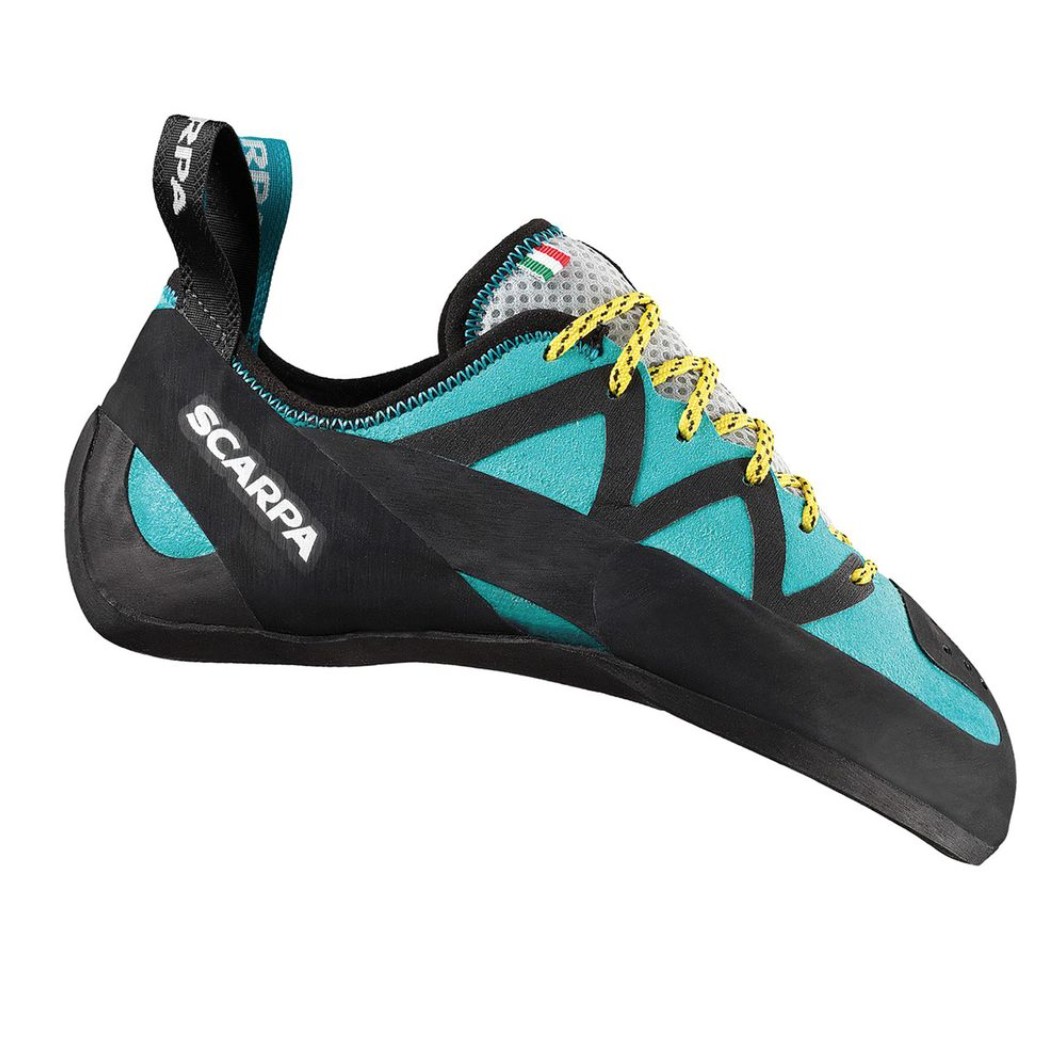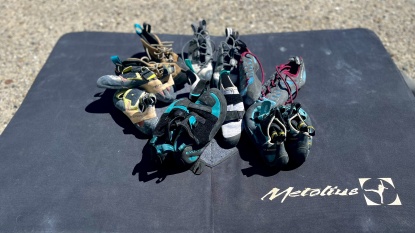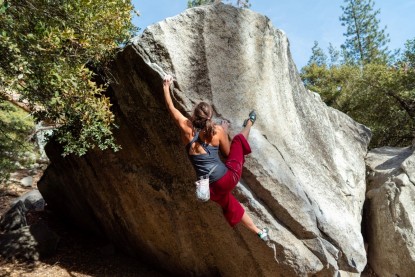Scarpa Vapor - Women's Review
Our Verdict
Our Analysis and Test Results
The Scarpa Vapors have a unique combination of features that can make or break them, depending on what you are looking for in a climbing shoe. They are surprisingly soft for a relatively aggressive model, which can be a bit unnerving on small holds and edges. On the flip side, this also makes them comfortable for all-day use, depending on how they are sized.
Comfort
The sizing on the Vapor plays a huge role in the shoes overall comfort. We sized ours fairly small, making them feel good for toeing into small holds, but also fairly painful when worn for long periods of time. Also, the lacing system gave us blisters on the top of our big toes during the first few times the Vapors were worn. We didn't run into this issue with any other shoes in this review and think it's because of the shape of the tongue. The Miuras are similar in that they are lace-ups and can be sized comfortably or for a more high-performance fit. With all said and done, the Miuras felt more comfortable after the initial break-in period. Both the Evolv Kira and the Five Ten Anasazi are Velcro and less aggressive, making them more comfortable overall.
Sensitivity
As far as toeing into small holds and precision footwork, the Vapor is shaped to be a solid performer. That said, the rubber was significantly less sticky, and not as substantial as the soles of both the La Sportiva Kataki and the La Sportiva Miura. There seemed to be less rubber overall on the Vapor, and our feet seemed to continually pick off of small granite nubbins that the award-winning Kataki had no problem sticking to. This was the biggest downside to the Vapor and left us unwilling to trust our feet on micro holds.
Edging
Much like their performance in the sensitivity metric, the Vapors were a bit of a let-down when it came to edging, mostly due to the rubber on their soles and the shape of the toe box. The toe box shape is bulky and made it hard to place the shoe precisely on small edges. Also, the rubber on these shoes was a bit unnerving on small holds, and we found ourselves slipping off more often that we liked. Our pick for top-notch edging is either the Kataki or the Miura, depending on how stiff or downturned you like your shoes.
Cracks
Though not marketed specifically as a crack climbing shoe, the Vapors performed quite well in cracks. Their soles are not as stiff as the Butora Libra and their flexibility allows them to mold well into cracks. Since they are lace-ups, durability is a concern if you are planning on using them strictly for crack climbing.
Pockets
For steep climbing and pockets, the Vapor performs very well. In these settings, super sticky rubber is less of a necessity, whereas the shape and heel fit is more important. The laces provide lots of adjustability, making the shoes conform to the shape of your foot. This allows for more toe-in power and the ability to pull in close to steep walls. A shoe that performs similarly on this type of terrain is our Best Buy Award Winner, the Mad Rock Lotus, another great competitor.
Ease of Use
These shoes are incredibly easy to get on for a lace-up shoe. The Vapors have thin, slippery laces that are easy to undo and loosen. The laces are long enough that they can be totally undone, which allows you to get your foot in and out easily. These laces are also easy to tighten and lace-up when you're putting them on. The Vapors are much easier to lace and unlace than theLa Sportiva Miura or the La Sportiva Kataki, which take some work to adjust.
Value
Sold online for $175, the Vapor is no small purchase. These shoes are comparable in price to the Miura as well as the Kataki, but in our opinion, do not perform as well overall. This makes it hard to fully support purchasing the Vapors when you can buy a better overall shoe for a similar price.
Conclusion
Overall, the Scarpa Vapor is a decent performer among our fleet this year. They scored slightly above average in all metrics and didn't have any huge drawbacks, besides the blisters and their difficulties with small holds. There are shoes that performed better, but similarly, there are shoes that scored much worse.









